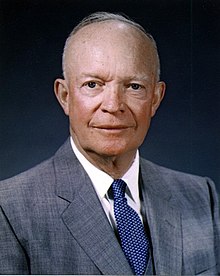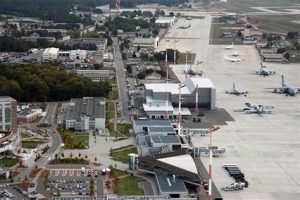. (1994). Reconceptualizing rhetorical history: Eisenhower’s farewell address. Quarterly Journal of Speech
Plain numerical DOI: 10.1080/00335639409384067
DOI URL
directSciHub download
Show/hide publication abstract
. (1961). Text of Eisenhower’s Farewell Address. New York Times
Show/hide publication abstract
. (2008). A biomedical military-industrial complex?. Technovation
Plain numerical DOI: 10.1016/j.technovation.2008.09.004
DOI URL
directSciHub download
Show/hide publication abstract
. (2011). Eisenhower versus the spin-off story: Did the rise of the military-industrial complex hurt or help America’s commercial aircraft industry?. In Enterprise and Society
Plain numerical DOI: 10.1093/es/khq134
DOI URL
directSciHub download
Show/hide publication abstract
. (2010). Military-Industrial Complex, Organization And History. In Encyclopedia of Violence, Peace, and Conflict
Plain numerical DOI: 10.1016/B978-012373985-8.00109-4
DOI URL
directSciHub download
Show/hide publication abstract
. (1996). Beware the Medical-Industrial Complex.. Oncologist
Show/hide publication abstract
. (2010). Military-Industrial Complex, Contemporary Significance. In Encyclopedia of Violence, Peace, and Conflict
Plain numerical DOI: 10.1016/B978-012373985-8.00104-5
DOI URL
directSciHub download



![Annie Jacobsen: Inside DARPA - The Pentagon's Brain 450px-Annie_Jacobsen_0373[1]](https://cognitive-liberty.online/wp-content/uploads/450px-Annie_Jacobsen_03731-225x300.jpg)
![Killing babies in incubators - The fake Nayirah testimony (PR PsyOp) hqdefault[1]](https://cognitive-liberty.online/wp-content/uploads/hqdefault1-300x225.jpg)


![Structural violence ea34b70928f11c3e815b410cee45449efe76e7d11bb6114291f7c7_640[1]](https://cognitive-liberty.online/wp-content/uploads/ea34b70928f11c3e815b410cee45449efe76e7d11bb6114291f7c7_6401-300x198.jpg)
![Martin Luther King e834b70f29f7033ecd0b4401ef444f94eb6ae3d01db316419cf1c97f_640[1]](https://cognitive-liberty.online/wp-content/uploads/e834b70f29f7033ecd0b4401ef444f94eb6ae3d01db316419cf1c97f_6401-300x300.jpg)

![The British Raj in India MAU-MAU[1]](https://cognitive-liberty.online/wp-content/uploads/MAU-MAU1-300x223.jpg)
![Academic freedom noam-chomsky[1]](https://cognitive-liberty.online/wp-content/uploads/noam-chomsky1-200x300.jpg)
![Nelson Mandela e834b70f29f7023ecd0b4401ef444f94eb6ae3d01db316419df9c579_640[1]](https://cognitive-liberty.online/wp-content/uploads/e834b70f29f7023ecd0b4401ef444f94eb6ae3d01db316419df9c579_6401-300x300.png)
![Harold Pinter – Nobel Lecture iu[1]dd](https://cognitive-liberty.online/wp-content/uploads/iu1dd-300x292.jpg)
